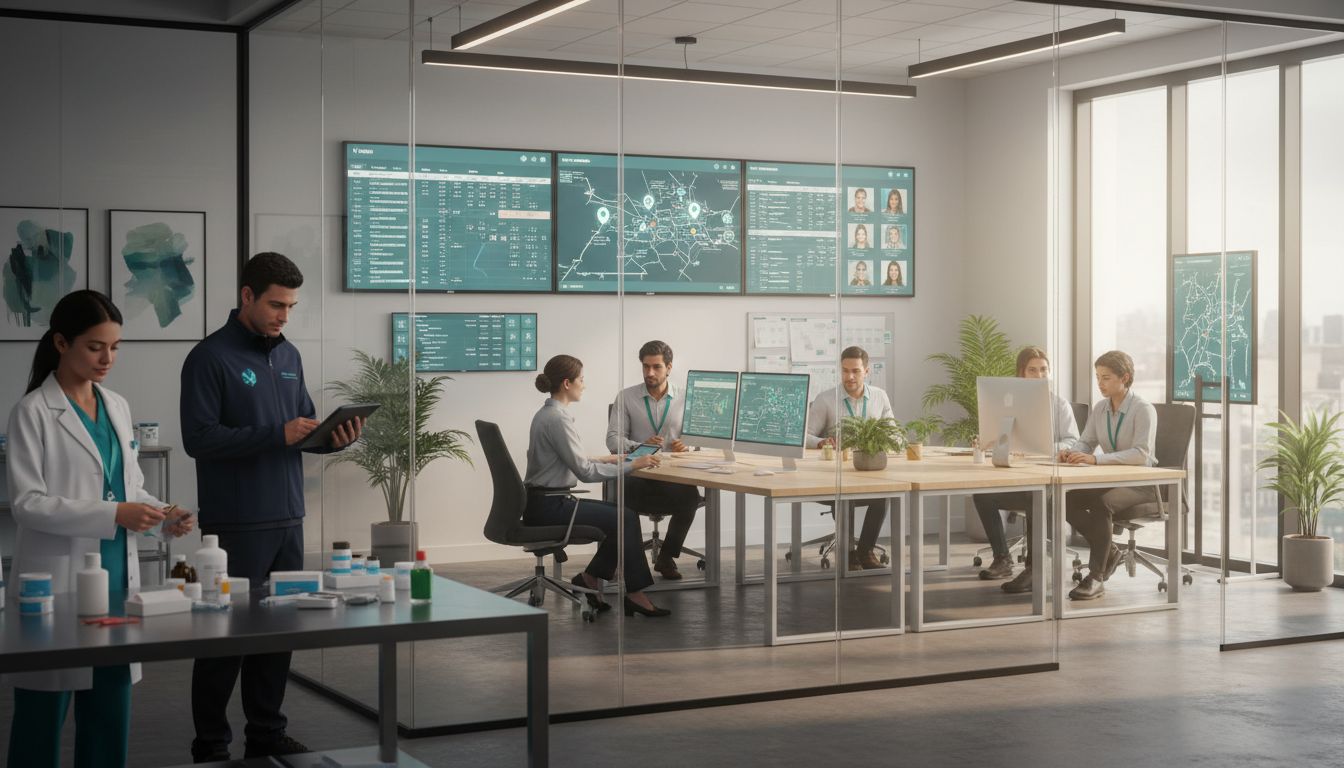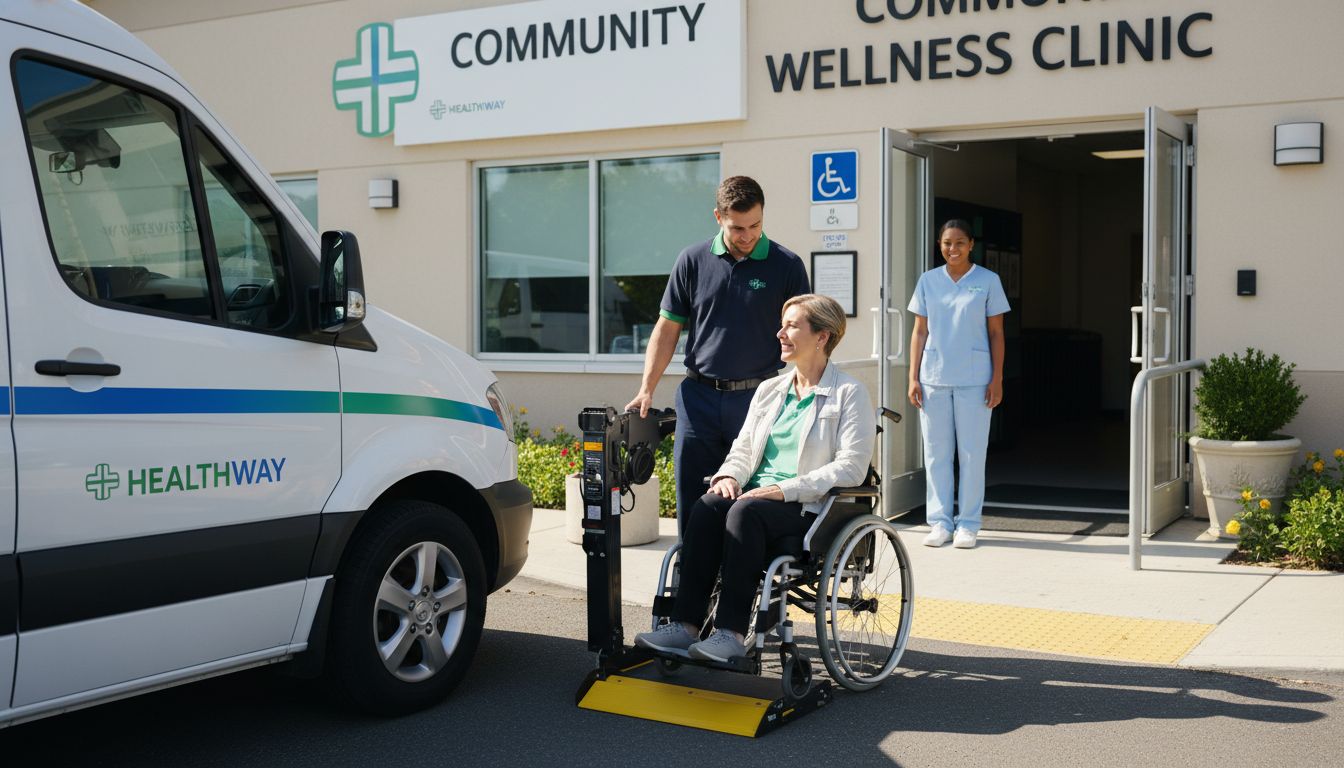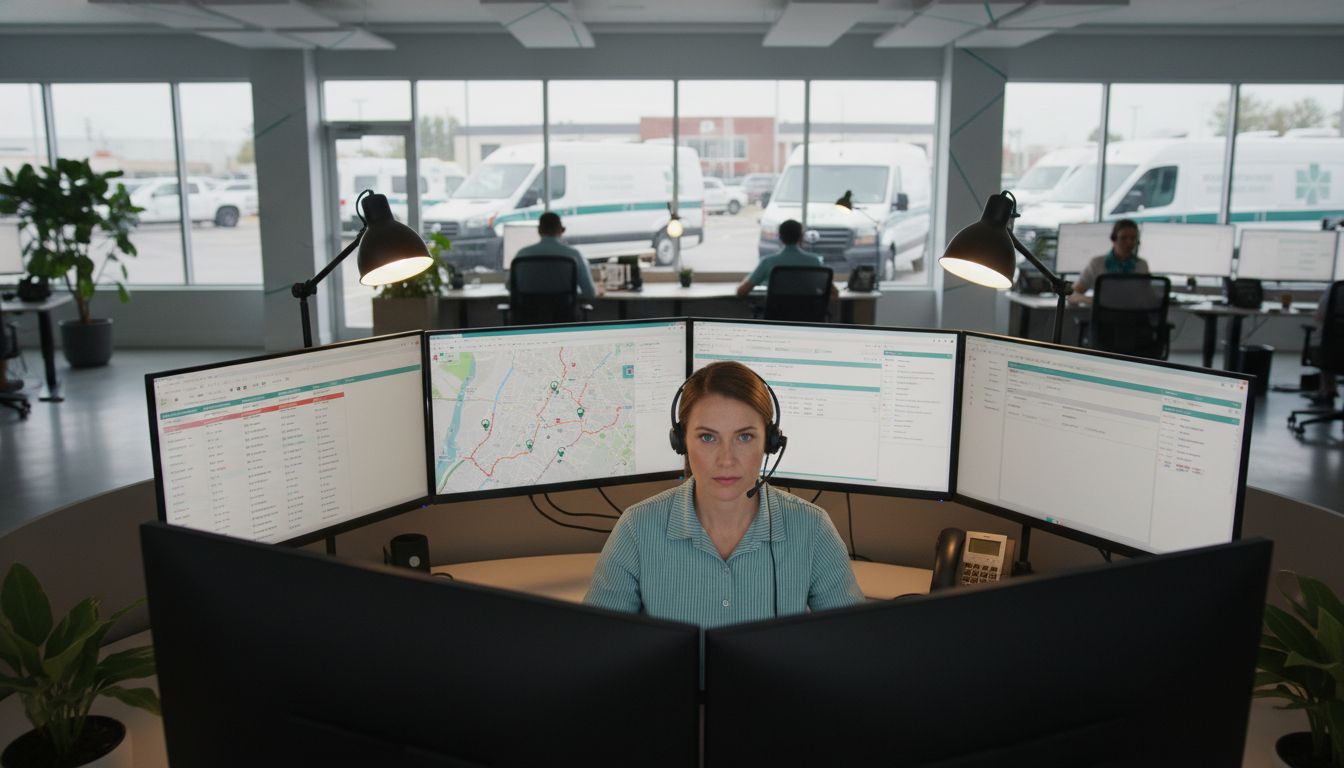Improving Patient Communication: 2025 Strategies for Healthcare Teams
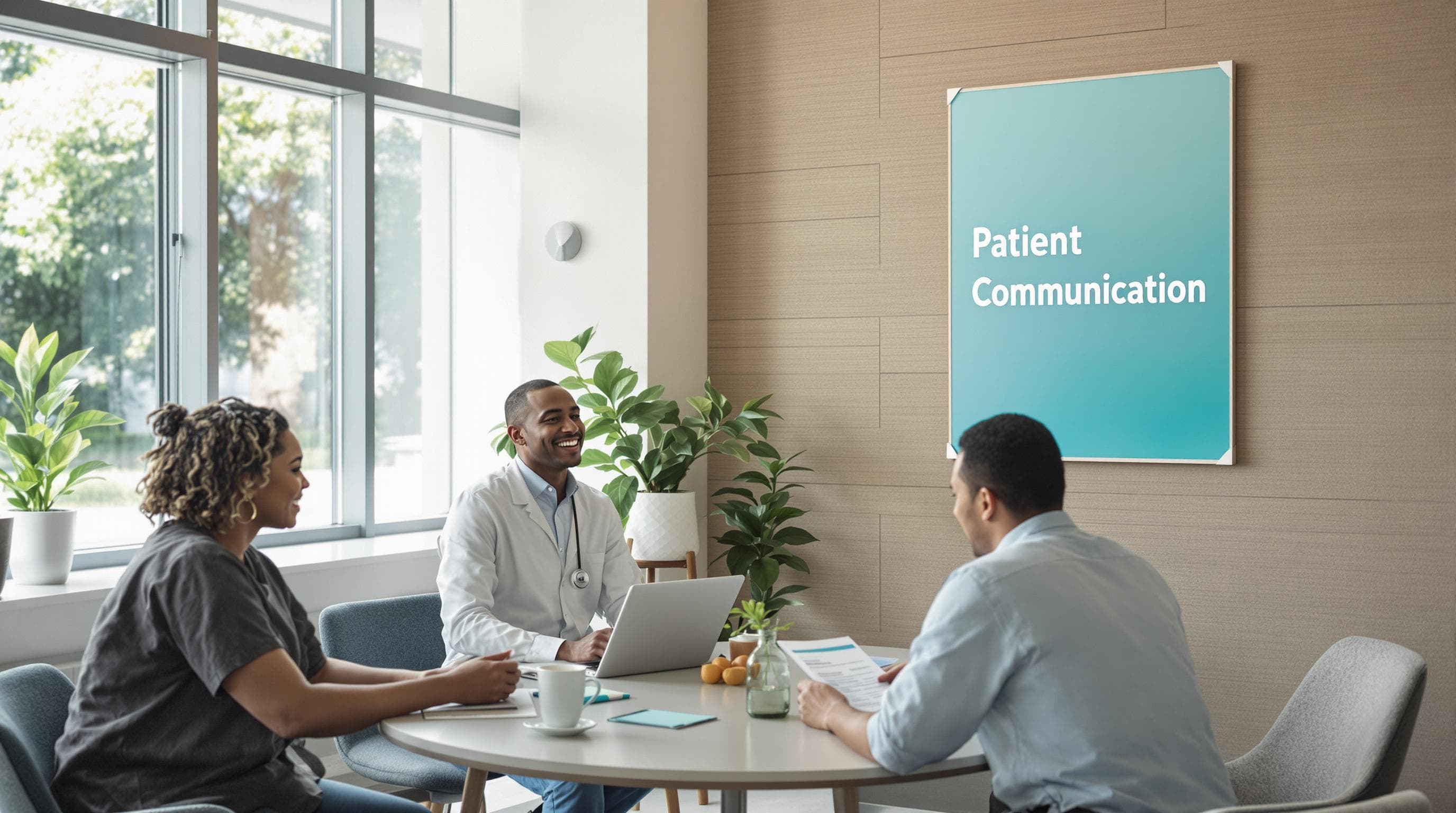
Patient communication shapes every healthcare outcome and the stakes have never been higher. Over 36% of Americans struggle with basic health literacy, making misunderstandings and missed treatments far too common. What may surprise you is that even new technology is not the full solution. Real progress in 2025 will depend on how healthcare teams blend cultural empathy, tailored dialogue, and smart tech to finally close the gap.
Table of Contents
- Understanding Barriers To Patient Communication
- Best Practices For Effective Patient Interaction
- Leveraging Technology For Better Communication
- Tailoring Communication For Diverse Patient Groups
Quick Summary
| Takeaway | Explanation |
|---|---|
| Address Language and Cultural Barriers | Recognize and address significant language and cultural differences that can impede patient understanding and treatment adherence, emphasizing cultural competence in healthcare interactions. |
| Enhance Health Literacy | Develop communication strategies that simplify medical language and utilize visual aids to improve patient understanding, particularly for those with lower health literacy. |
| Leverage Technology for Communication | Implement digital platforms, telemedicine, and mobile health applications to facilitate timely communication, increase engagement, and enhance patient education. |
| Build Trust Through Rapport | Foster strong patient relationships by employing active listening, open-ended questions, and appropriate nonverbal cues to demonstrate genuine interest and understanding. |
| Tailor Strategies for Diverse Populations | Adopt inclusive communication practices and utilize technology to meet the unique needs of diverse patient groups, ensuring effective and accessible healthcare communication. |
Understanding Barriers to Patient Communication
Healthcare teams face complex challenges in establishing effective patient communication, which directly impacts the quality of care and patient outcomes. Improving patient communication requires a comprehensive understanding of the multifaceted barriers that obstruct meaningful healthcare interactions.
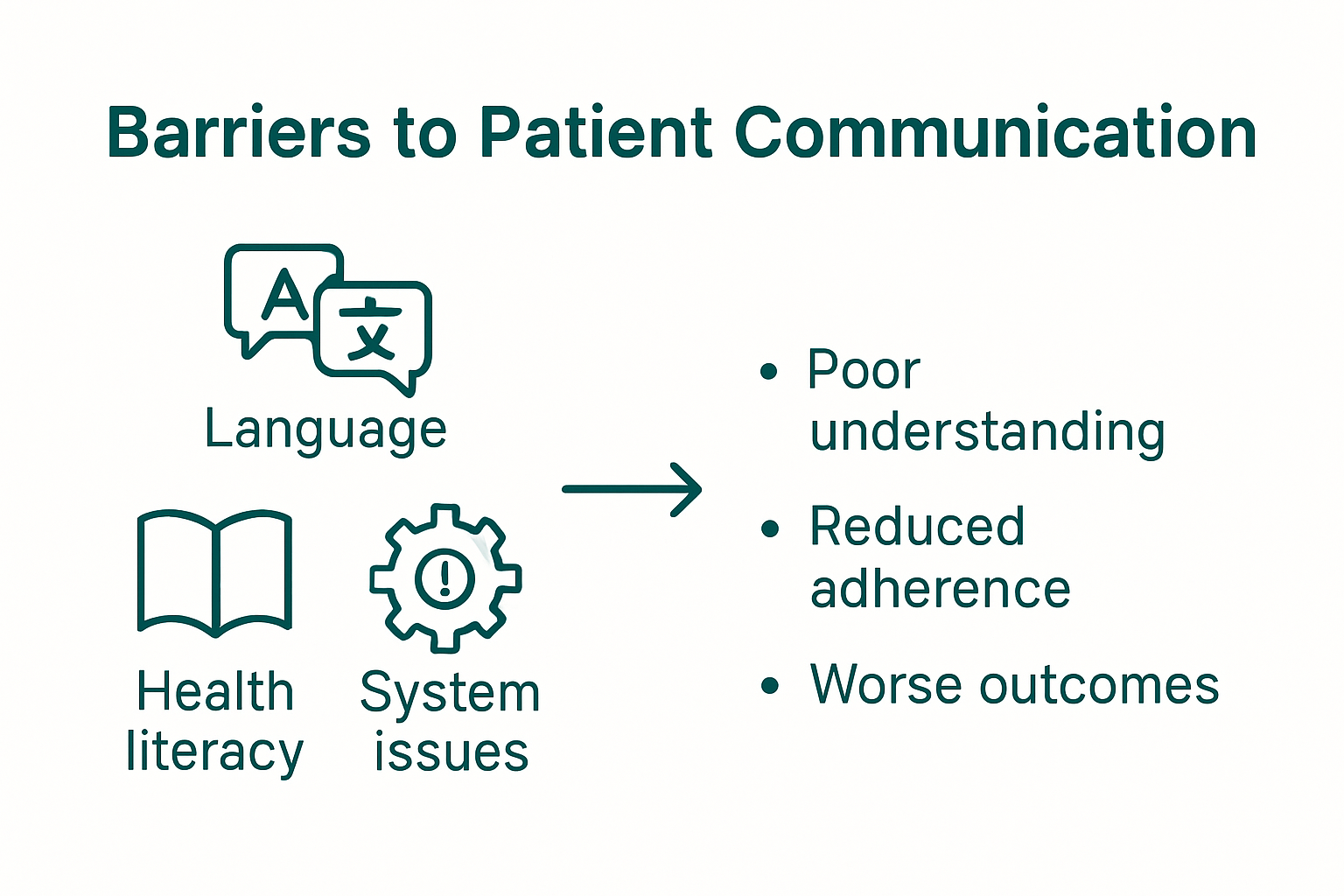
Language and Cultural Complexity
Communication breakdowns often stem from significant language and cultural differences within healthcare settings. Research from the National Institutes of Health reveals that language barriers can profoundly impact patient understanding, treatment adherence, and overall healthcare experience. Healthcare providers encounter challenges when patients have limited English proficiency or come from diverse cultural backgrounds with unique communication norms.
These barriers are not merely linguistic but deeply rooted in cultural interpretations of health, illness, and medical treatment. Patients from different cultural backgrounds may have varying expectations about medical interactions, personal space, eye contact, and how medical information should be discussed. For instance, some cultures prioritize family decision making over individual patient autonomy, while others emphasize direct communication.
Health Literacy and Information Comprehension
Another critical barrier to effective patient communication is the varying levels of health literacy among patients. A comprehensive study in patient safety journals highlights that patients often struggle to understand complex medical terminology, treatment plans, and healthcare instructions.
Health literacy goes beyond basic reading skills. It encompasses a patient’s ability to obtain, process, and understand basic health information needed to make appropriate healthcare decisions. Patients with lower health literacy are more likely to misinterpret medical instructions, struggle with medication management, and have difficulty navigating healthcare systems.
Healthcare teams must recognize that health literacy is not uniform across patient populations. Factors such as education level, socioeconomic status, age, and previous healthcare experiences significantly influence a patient’s ability to comprehend medical information. Developing communication strategies that simplify medical language, use visual aids, and confirm patient understanding becomes crucial.
Systemic and Structural Communication Challenges
Beyond individual patient factors, systemic healthcare structures create substantial communication barriers. Time constraints during medical consultations, fragmented healthcare delivery, and lack of integrated communication tools can impede effective patient interactions.
Medical professionals often face overwhelming administrative burdens that limit the time available for meaningful patient conversations. Short consultation windows make it challenging to explore patient concerns comprehensively, build trust, and ensure complete understanding of medical recommendations.
Addressing these communication barriers requires a multifaceted approach. Healthcare teams must invest in cultural competency training, develop patient-centered communication protocols, leverage technology for better information exchange, and create environments that prioritize clear, compassionate, and accessible healthcare communication.
By systematically identifying and addressing these barriers, healthcare providers can transform patient communication from a potential point of failure to a strategic opportunity for improving overall healthcare delivery and patient experiences.
To help clarify the types of barriers discussed, the following table summarizes the main categories of patient communication barriers and their key features.
| Barrier Category | Description | Examples |
|---|---|---|
| Language and Cultural Complexity | Challenges due to language differences and cultural norms in communication | Limited English proficiency, differing beliefs about health |
| Health Literacy and Information Comprehension | Difficulties understanding medical information and instructions | Misinterpreting medication, struggling with jargon |
| Systemic and Structural Communication | Obstacles from healthcare systems, workflows, and time constraints | Short appointments, fragmented care, lack of translation tools |
Best Practices for Effective Patient Interaction
Effective patient interaction represents a critical component of high-quality healthcare delivery. Healthcare professionals must develop sophisticated communication strategies that go beyond basic information exchange to create meaningful, trust-based relationships with patients.
Building Rapport and Trust
The American Academy of Family Physicians highlights the importance of establishing genuine connections with patients through intentional communication techniques. Starting patient interactions with open-ended questions allows healthcare providers to demonstrate genuine interest and create a comfortable environment for dialogue.
Nonverbal communication plays a significant role in building patient trust. Maintaining appropriate eye contact, using a welcoming body language, and creating a physically comfortable consultation space signals respect and attentiveness. Patients are more likely to share comprehensive information and follow medical recommendations when they feel genuinely heard and understood.
Active listening becomes a critical skill in these interactions. This involves not just hearing patient words but comprehending their underlying emotions, concerns, and context. Providers should practice reflective listening techniques such as paraphrasing patient statements and asking clarifying questions to ensure complete understanding.
Patient-Centered Communication Strategies
The Agency for Healthcare Research and Quality emphasizes developing communication approaches that prioritize patient engagement and comprehension. The Teach-Back method emerges as a powerful technique for verifying patient understanding.
With the Teach-Back method, healthcare providers ask patients to explain medical instructions in their own words. This approach helps identify potential misunderstandings immediately and allows for real-time clarification. For instance, a provider might say, “I want to make sure I explained your medication instructions clearly. Could you tell me how you’ll take these pills?”
Additionally, patient-centered communication involves adapting communication styles to individual patient needs. This might include using simple language, providing written summaries, utilizing translation services, or incorporating visual aids to support verbal explanations.
Technology-Enhanced Patient Communication
Technology offers innovative solutions for improving patient interactions beyond traditional in-person consultations. Digital communication platforms can provide patients with secure messaging, video consultations, and accessible health information repositories.
These technological tools enable more frequent and convenient communication between patients and healthcare providers. Patients can ask follow-up questions, review medical records, and receive timely updates without scheduling additional in-person appointments. However, healthcare teams must ensure these digital platforms maintain the same level of personalization and empathy as face-to-face interactions.
Healthcare providers should also recognize that technology should complement, not replace, human interaction. The goal is to use digital tools to enhance communication efficiency while preserving the essential human elements of compassion, understanding, and personalized care.
By implementing these best practices, healthcare teams can transform patient interactions from transactional exchanges to meaningful, collaborative experiences that support better health outcomes and patient satisfaction.

Leveraging Technology for Better Communication
Technology has revolutionized patient communication, offering unprecedented opportunities for healthcare teams to enhance information exchange, patient engagement, and overall care delivery. By strategically implementing digital communication tools, healthcare providers can overcome traditional communication barriers and create more responsive, personalized healthcare experiences.
Digital Communication Platforms and Patient Engagement
Research in Health Informatics demonstrates that user-centered technology can significantly improve patient-centered care. Digital communication platforms now enable real-time interactions that transcend traditional healthcare communication limitations. These platforms integrate multiple communication channels, allowing patients to connect with healthcare providers through secure messaging, video consultations, and integrated health information systems.
The key advantage of these digital platforms lies in their ability to provide patients with immediate access to healthcare information. Patients can schedule appointments, receive test results, ask follow-up questions, and access personalized health records without traditional administrative barriers. This instant accessibility reduces patient anxiety, improves health literacy, and empowers individuals to take a more active role in their healthcare management.
Telemedicine and Remote Communication Strategies
Research published in Healthcare highlights the transformative potential of telemedicine in improving healthcare team coordination. Video conferencing and remote consultation tools enable healthcare professionals to conduct comprehensive patient assessments, provide specialized consultations, and coordinate care across different medical departments and geographic locations.
Remote communication technologies are particularly valuable for patients with mobility challenges, those living in rural areas, or individuals with chronic conditions requiring frequent medical monitoring. These tools allow healthcare providers to conduct regular check-ins, monitor patient progress, and make timely medical interventions without requiring patients to travel.
Moreover, telemedicine platforms can integrate advanced features like real-time translation services, ensuring effective communication across language barriers. This technological approach supports more inclusive and accessible healthcare communication.
Mobile Health Applications and Patient Education
Digital Health research reveals that mobile health applications play a crucial role in improving patient education and self-management. These applications offer personalized health information, medication reminders, symptom tracking, and educational resources that patients can access conveniently from their smartphones.
Advanced mobile health applications leverage artificial intelligence and machine learning to provide personalized health recommendations. They can analyze patient data, track health trends, and offer proactive insights that support preventive healthcare strategies. For instance, an app might provide personalized nutrition advice based on a patient’s medical history or send timely medication reminders.
Healthcare teams must approach technology implementation strategically, ensuring that digital communication tools enhance rather than replace human interaction. The goal is to create a seamless, integrated communication ecosystem that combines technological efficiency with compassionate, personalized care.
By embracing these technological innovations, healthcare providers can create more responsive, accessible, and patient-centered communication strategies that ultimately improve health outcomes and patient satisfaction.
The following table compares different technology solutions described above, outlining their key benefits and use cases for healthcare communication.
| Technology Solution | Key Benefits | Common Use Cases |
|---|---|---|
| Digital Communication Platforms | Real-time access, multiple channels, improved engagement | Appointment scheduling, secure messaging, test results |
| Telemedicine | Remote access to care, increased reach, specialized consults | Video visits, chronic care management, rural patients |
| Mobile Health Apps | Patient education, reminders, self-management | Medication tracking, health tips, symptom logging |
Tailoring Communication for Diverse Patient Groups
Healthcare communication must evolve to meet the complex needs of increasingly diverse patient populations. Effective communication strategies require a nuanced approach that recognizes and respects individual differences in language, culture, age, and personal background.
Cultural Competence in Healthcare Communication
The Agency for Healthcare Research and Quality highlights innovative approaches to addressing cultural diversity in healthcare communication. For example, Molina Healthcare’s 24-hour bilingual nurse advice line significantly increased patient engagement among Spanish-speaking members, demonstrating the power of language-accessible services.
Cultural competence goes beyond language translation. It involves understanding the unique cultural beliefs, values, and healthcare perspectives that shape patient interactions. Healthcare providers must develop skills to recognize and navigate cultural nuances that impact medical communication. This includes understanding different cultural attitudes toward medical treatment, family involvement in healthcare decisions, and personal health beliefs.
Nonverbal communication also plays a critical role in cultural competence. Different cultures have varying norms around eye contact, physical touch, personal space, and communication styles. Healthcare teams must become adept at reading and responding to these subtle cultural cues to build trust and rapport with diverse patient groups.
Inclusive Communication Strategies
The CDC’s guidelines on inclusive communication provide a comprehensive framework for developing patient-centered communication approaches. This involves creating visual materials that reflect diverse patient populations, using inclusive language, and ensuring communication materials are accessible to individuals with different backgrounds and abilities.
For patients with limited English proficiency, healthcare teams should implement robust translation and interpretation services. This goes beyond simple word-for-word translation to include cultural mediation that ensures patients fully understand medical instructions, treatment plans, and healthcare recommendations.
Additionally, healthcare providers must consider communication needs related to age, disability, and technological access. This might involve providing large-print materials for older patients, offering sign language interpretation for deaf patients, or creating simplified communication formats for patients with cognitive challenges.
Technology-Enabled Diverse Communication
A systematic review on telehealth access identifies key strategies for supporting communication with culturally and linguistically diverse communities. These include providing bilingual digital platforms, enhancing staff cultural competence in digital communication, and offering flexible technological support that meets diverse patient needs.
Digital health technologies offer unprecedented opportunities to create more inclusive communication experiences. Mobile applications with multilingual interfaces, real-time translation services, and culturally sensitive health information can bridge communication gaps that traditional healthcare models struggle to address.
Healthcare teams must view diversity as a strength, not a challenge. By developing communication strategies that genuinely respect and celebrate individual differences, providers can create more effective, compassionate, and patient-centered healthcare experiences.
Ultimately, tailoring communication for diverse patient groups is about recognizing the fundamental humanity in every patient interaction. It requires ongoing learning, empathy, and a commitment to breaking down communication barriers that can prevent individuals from receiving optimal healthcare support.
Frequently Asked Questions
What are the main barriers to effective patient communication?
The primary barriers to effective patient communication include language and cultural complexity, varying levels of health literacy, and systemic and structural challenges within healthcare systems that impede open communication.
How can healthcare teams enhance patient health literacy?
Healthcare teams can enhance patient health literacy by using clear and simple language, visual aids, confirming understanding through methods like Teach-Back, and providing written summaries of important information.
What role does technology play in improving patient communication?
Technology plays a critical role in patient communication by facilitating timely interactions through digital platforms, telemedicine, and mobile health applications, enhancing patient engagement and education.
How can communication strategies be tailored for diverse patient populations?
Communication strategies for diverse populations can be tailored by incorporating cultural competence, inclusive practices, and technology-enabled solutions that meet the specific needs of different languages and cultural backgrounds.
Transform Patient Communication Into Seamless Care Coordination
Healthcare teams face daily challenges around language differences, health literacy gaps, and disconnected systems. Misunderstandings from poor patient communication can lead to missed treatments, delays, and stress for both patients and teams. As the article highlights, even the best practices fall short without the right technology to unite information, people, and processes across your operations.
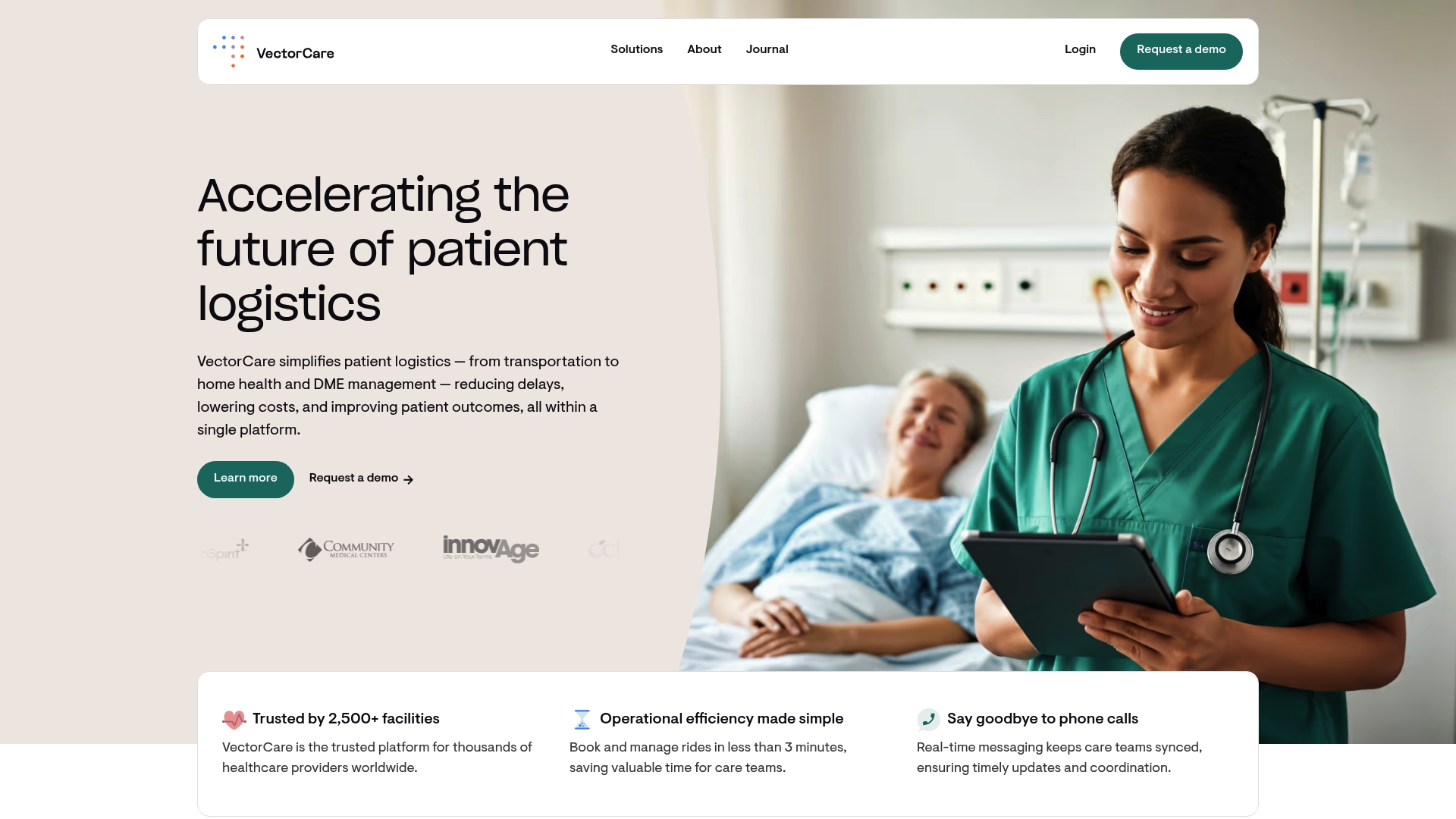
Ready to close the gaps in your communication strategies and achieve real efficiency? Discover how VectorCare removes barriers by providing secure, real-time updates, automated scheduling, and AI-driven tools designed for patient logistics. With integrated patient transport, home health, and equipment delivery management, your team can coordinate care and provide critical information faster and with less friction. See how our platform supports your goals by making every patient handoff clear and every workflow smarter. Visit VectorCare’s digital platform now and take the first step toward exceptional patient outcomes and operational excellence.
